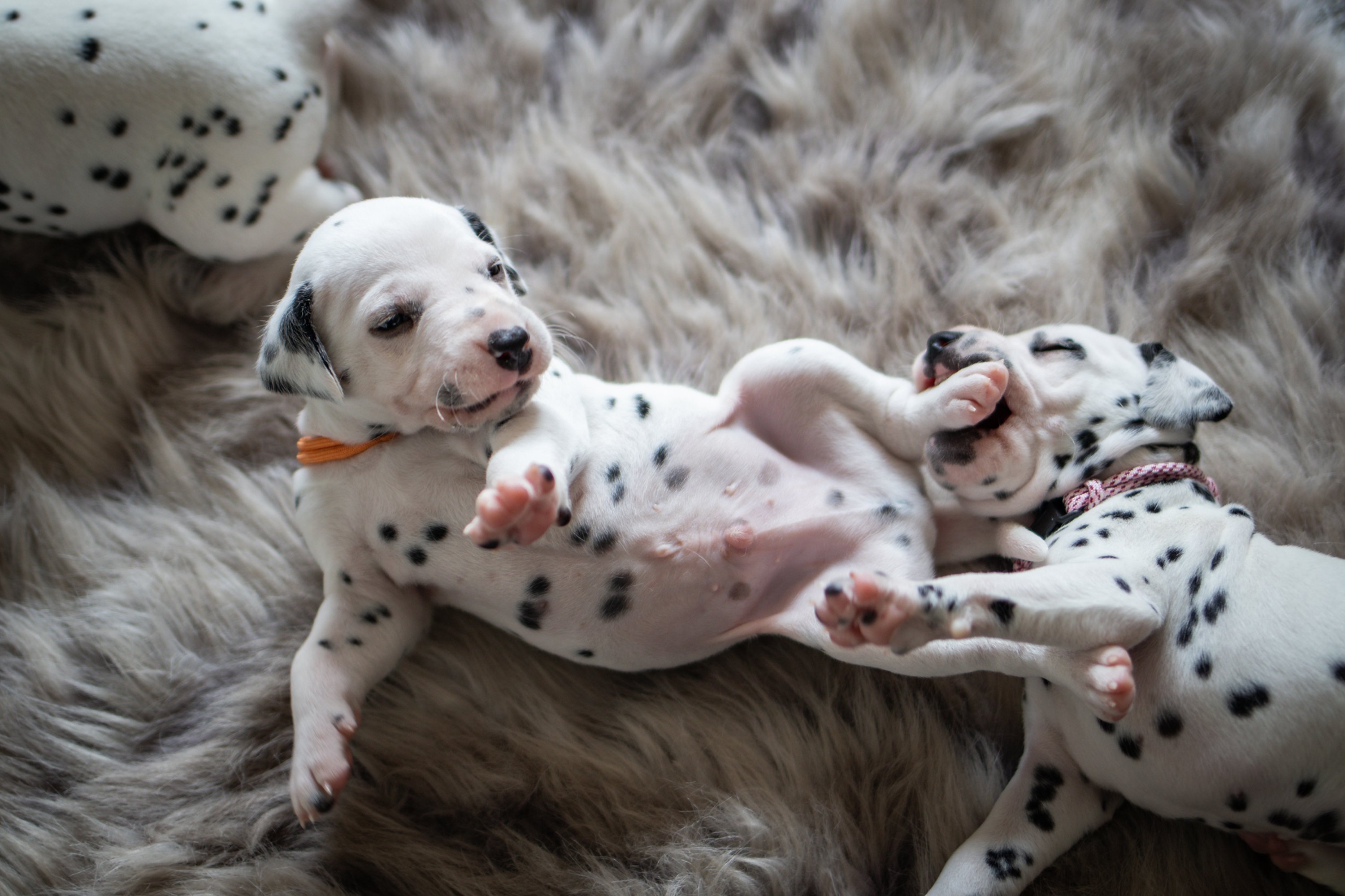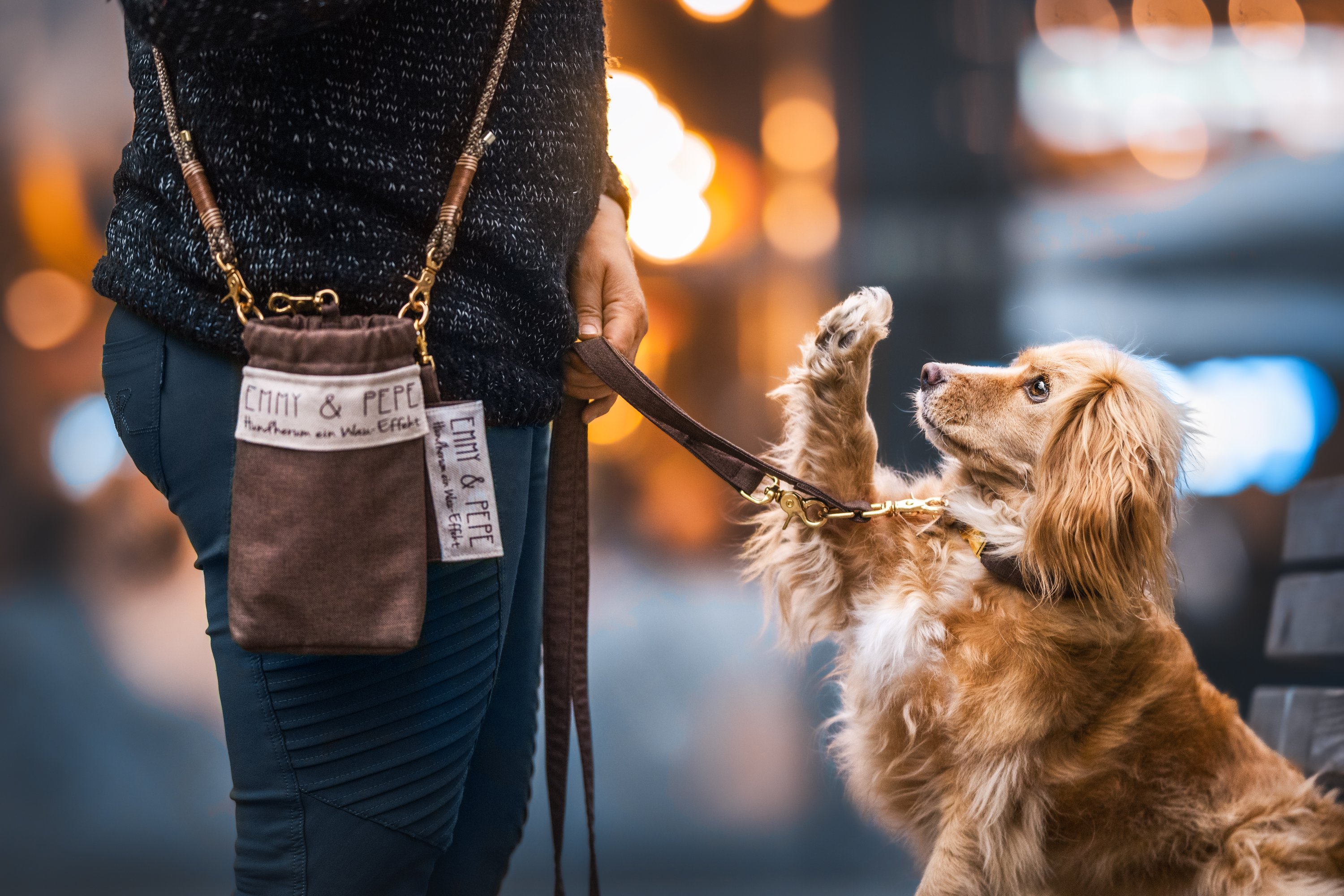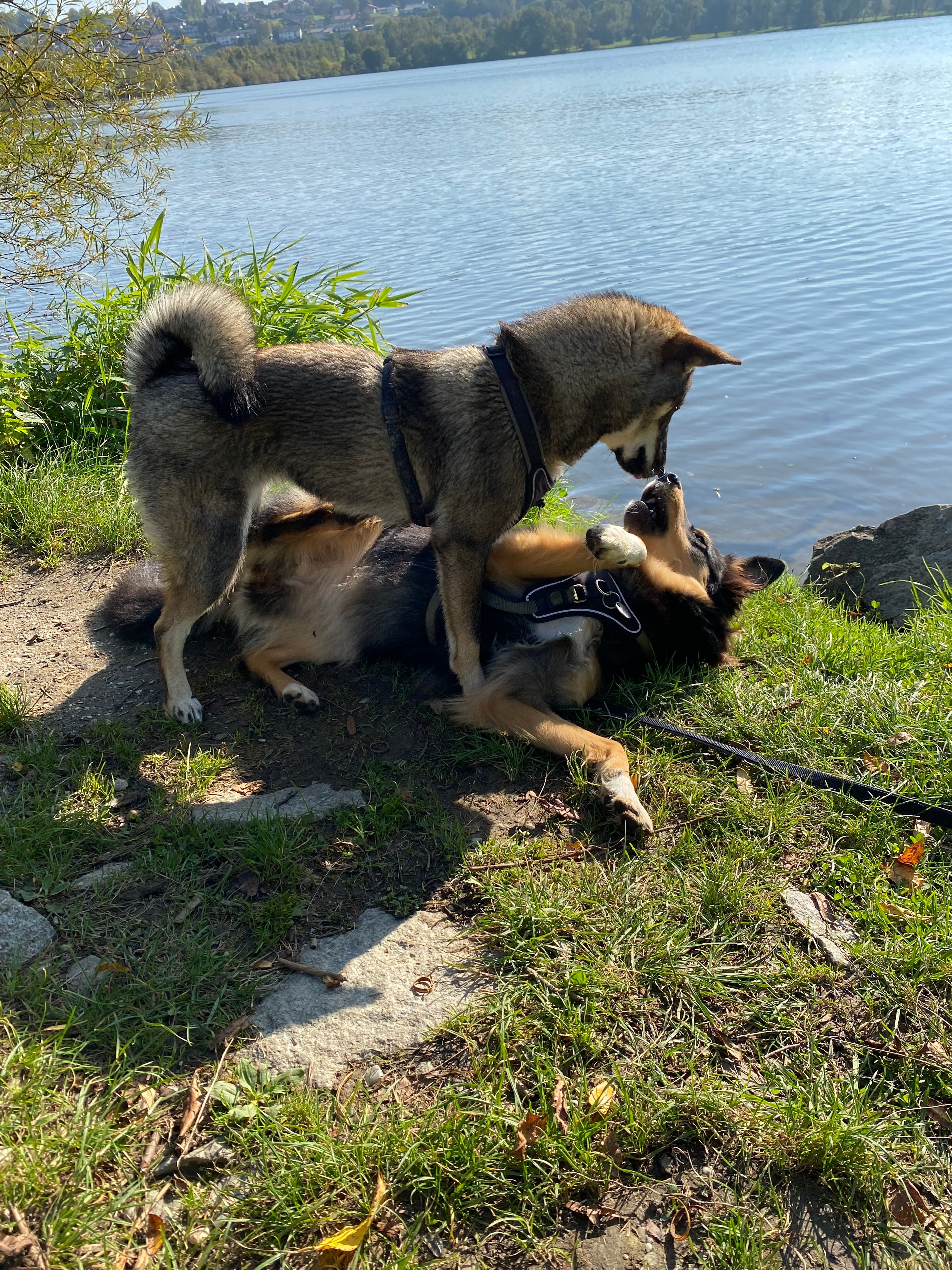Finding the right balance between exercise and rest for dogs can be very difficult, especially because the needs of dogs are often very individual. It is important neither to overtax nor to undertax the four-legged friends.
In addition to sufficient rest periods, a varied occupation is very important. Dogs should not only be exercised physically, but also mentally, socially and, if necessary, breed-related.
In this article you will learn how to properly exercise your four-legged friend, what you should pay attention to, and what kinds of occupations for dogs there are, so that you can offer your four-legged friend a varied everyday life.
How do I properly exercise my dog?
In the world of many dog owners, proper exercise is always a big topic. If a dog seems restless and unfocused, it is often blamed on a lack of exercise. Although this case can undoubtedly also occur, it is very common that the four-legged friend simply gets too little sleep.
Wusstest du, dass Hunde am Tag im Durchschnitt etwa 20 Stunden schlafen?
Bei dieser Zeitangabe handelt es sich allerdings nicht nur um Tiefschlafphasen, sondern um die Gesamtheit von Ruhephasen pro Tag. Das heißt, dass auch Dösen oder ausruhen dazuzählen. Welpen und Seniorhunde schlafen in der Regel sogar noch mehr asl erwachsene Hunde, weswegen eine Schlafzeit von 22 Stunden nicht unüblich ist. Diese Ruhephasen sind unglaublich wichtig für unsere Vierbeiner, denn wie auch wir Menschen, verarbeiten sie das Erlebte im Schlaf. Besonders Welpen werden zu Beginn eher überlastet und sind dann überfordert. Denke daran, dass auch ein Welpe am Tag viele Ruhephasen braucht, um die erlebten Ereignisse, und häufig auch viele neue Eindrücke, verarbeiten zu können.

What should I pay attention to when keeping my dog occupied?
How much activity the four-legged friend needs can therefore be quite individual. However, how much a dog is kept busy is basically of secondary importance, as in this case quality comes before quantity. The type of activity is therefore much more valuable.
- Fun: Of course, the most important thing is that your dog enjoys the activity. There are dogs who are enthusiastic about many types of activities. Others may thrive on tracking, but are not good companions for the morning jog. Observe your dog and, if in doubt, seek the advice of an expert.
- Mental and physical activity: Mental activity can also be exhausting for your dog. You don't always have to keep your dog physically occupied; many dogs enjoy mental tasks.
Breed-specific activities: There are dogs that have been bred for specific reasons. They especially enjoy breed-specific activities. For example, hunting dogs and Bracken were bred specifically for hunting, and often enjoy dummy work very much. - Social activities: Although dogs do not have to greet every dog they meet during a walk, social contact can be very important for our four-legged friends.
- Challenging, but solvable: Especially with search and intelligence games, it is important that you do not overtax your dog. Start small and work with your dog step by step. Just like in training, focus on small successes and have a lot of patience.
- Age-appropriate occupation: Perhaps it is obvious that the majority of senior dogs are simply no longer suitable as jogging companions. However, puppies or dogs with little stamina or motivation should not be forced to do anything. Senior dogs in particular still want to be challenged in their old age; thinking, searching or intelligence games are particularly suitable here.
What are physical activities for the dog?
The physical exercise of dogs is mainly done in nature. However, there are also a number of physical activities that can be done indoors.
Dog sports:
Besides walking, dog sports are probably one of the most popular physical activities for dog owners. Sports such as agility or dog pulling sports like canicross or bikejoring are particularly popular. Rally obedience, a dog sport from the USA, is also finding more and more followers in Germany. Tracking training or mantrailing not only promotes a high level of concentration in the dogs, but also puts them under physical strain. This is because the dogs have to follow the tracks of food or people over several hundred meters.
Cavaletti training and hoopers are particularly suitable for senior dogs, but should of course be adapted to the dog's state of health. These are units from the dog sport agility, but can also be implemented super outside a training area. Especially training with a cavaletti can be carried out in the garden or even in the flat after purchasing the cavaletti poles at a reasonable price. In the home, however, make sure that the surface is not too slippery. Alternatively, you can use branches to simulate low jumps: the only important thing is that the branch does not have any sharp edges that could injure your dog.
Walking:
An extensive walk in nature is good for many four-legged friends. They can sniff, romp and run, and go their own way for a bit.
Sporty dogs also enjoy it when their owners get on their bikes or inline skates. At last, the two-legged friend can match their pace. Of course, the dog should not be pushed to its limit, but a large number of dogs enjoy a fast pace on their walk for a change. Make sure that your dog has the opportunity to take breaks.
Swimming:
If your dog likes water, swimming in the lake or sea is also a good form of exercise. One of the main advantages of regular swimming is that it can only benefit your dog's muscle training.
Playing:
Playing with other dogs is not only a physical activity, but also a social one. However, there are also dogs that can rather be described as loners, in addition to which conspecifics are not always available. Playing with their two-legged friends is a lot of fun for most dogs, and it also keeps them physically active.
What are mental activities for your dog?
There are a number of activities that will keep your dog mentally occupied. Many of these activities can be done both indoors and outdoors, but many dogs find it difficult to learn new activities outdoors. This is because there are so many distractions outside. As a rule, it is easier for you and your four-legged friend to start new exercises within your own four walls.

Kommandos und Tricks

Impulskontrolle und Frustrationstoleranz
Nose work
Most dog owners already know that the nose of our beloved four-legged friends is much better and more sensitive than our own. Did you know that dogs can smell stereoscopically? This means that both nostrils can perceive different scents at the same time, as they operate independently of each other. That's why nose work is so important as a mental exercise and is a lot of fun for many dogs. To challenge your dog's nose, you can play hide and seek. You can hide treats or your dog's favorite toy behind a bush or in tall grass and let it look for it. You can also put your dog down and hide yourself, and it has the task of finding you. Indoors, this activity can be done just as well. Sniffing carpets is also a popular task.
Intelligence games
There is now a very large selection of intelligence toys for dogs. Especially on rainy days or days that are stressful for humans, this kind of activity can be very diversified. Most intelligence toys are designed in such a way that the goal is a treat that the dog has to free from the toy. Depending on the level of difficulty, this requires a high level of concentration and very good thinking skills from the dog. Many toys also encourage the use of the nose. Our four-legged friend must work in a solution-oriented manner and be patient, because too much stress limits the ability to concentrate.
Fetching
Many hunting dogs and Bracken enjoy retrieving, but other dog breeds are also enthusiastic about training. You can work with a dummy, for example, but also with a simple toy. Of course, retrieval training must be built up slowly, but it quickly becomes an activity that challenges the dog both physically and mentally. If you throw the dummy out of sight of your dog, you also force him to do nose work.
Are you still looking for a dummy or a new toy for your pet? You've come to the right place!